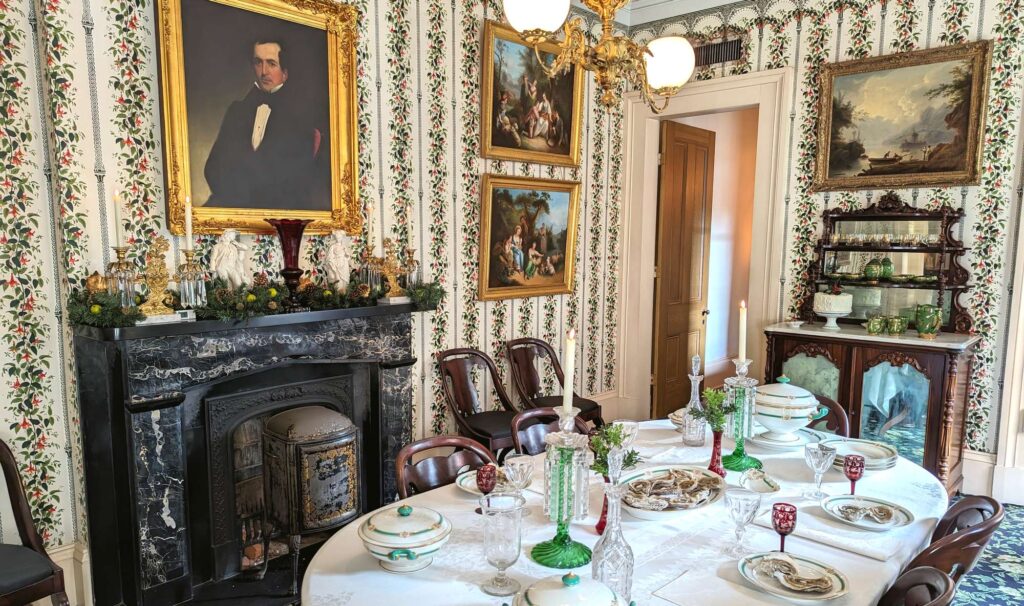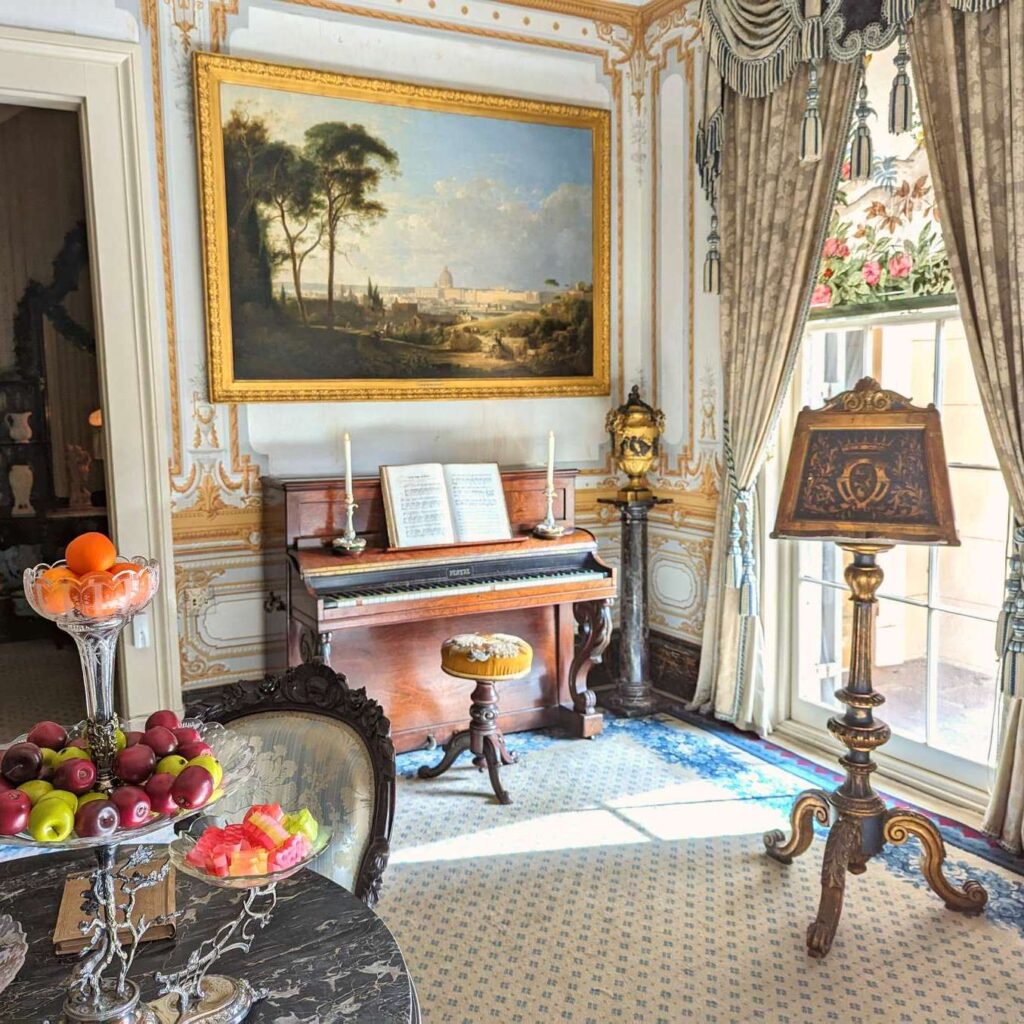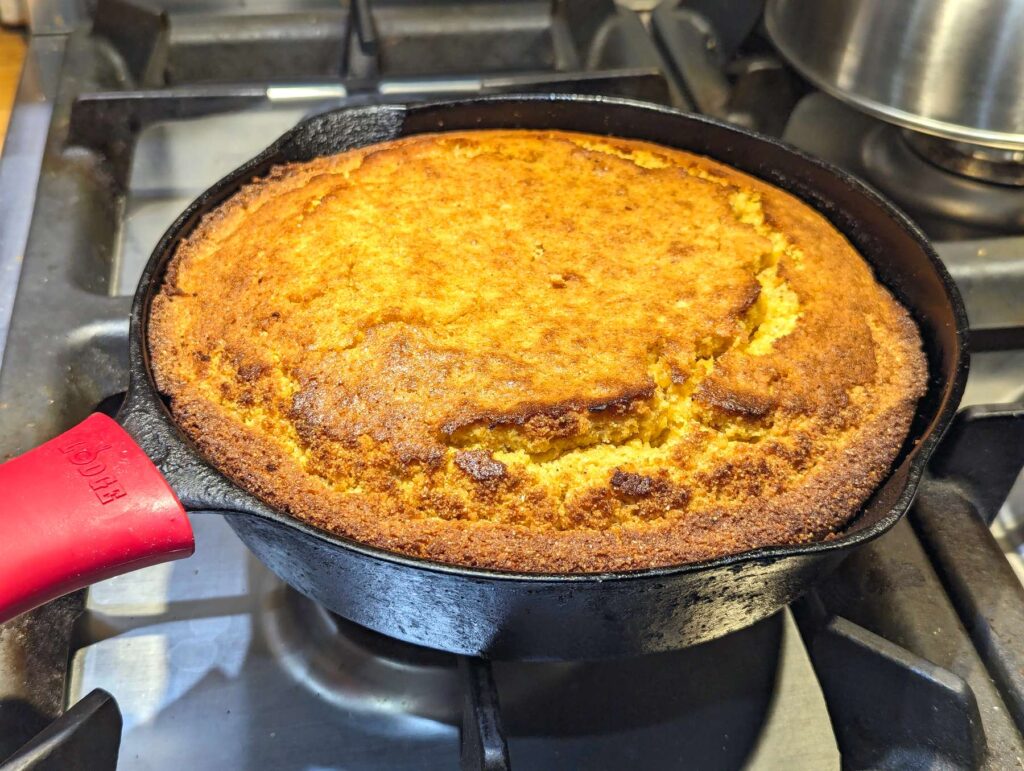
New Orleans’ Reveillon dinners are a link to the city’s past. Tradition holds that during the mid-19th century, well-to-do families would feast on an elaborate meal after Mass on Christmas Eve and again on New Year’s Eve. The practice had all but disappeared until the city’s restaurants revived it with special Reveillon menus. The four-course meals range from $40 to $150, putting them in reach of many pocketbooks.

I like a taste of history with my meal, so one afternoon, I visited the Gallier House museum (1132 Royal St., New Orleans, La.; 504-274-0748; hgghh.org) to see how a French Quarter family would have lived more than 150 years ago. The townhome with elaborate wrought iron balcony was designed by noted architect James Gallier, Jr. and completed in 1860. He lavished it with fine mouldings, skylights, and the almost unheard-of luxury of hot and cold running water. Members of the architect’s family lived in the home until 1917. It became a museum in 1971.
The home doesn’t contain any Gallier family belongings, but it has been furnished to reflect their gracious lifestyle. Before the Civil War, four enslaved people maintained the household and one room in the back wing recreates that more bare-bones existence.
The Gallier family welcomed guests in the front parlor where they could show off their most prized possessions. The only slightly less impressive back parlor was for family and close friends. They celebrated Christmas here with carol singing and modest gifts. More expensive gifts were exchanged on New Year’s Day.
The dining room is one of the most elegant rooms in the house. I tried to imagine the beautifully set table as the scene of a Reveillon dinner, with family members and guests eating and drinking and trying not to spill on their fancy clothes.
A taste from a traditional Creole kitchen
I don’t know if Sweet Potato Cornbread would have been on the menu, but the Gallier House has adapted a recipe from Creole Cookery, a cookbook published in 1885 by The Woman’s Exchange. The recipe makes a sweet, cake-like cornbread also known as ‶pone.″ Mashed sweet potatoes and black pepper might seem unusual ingredients today, but they were typical of Creole cuisine,
SWEET POTATO CORNBREAD

- 1 small sweet potato
- 7 tablespoons butter
- 2 cups fine cornmeal
- 1 1/2 teaspoons baking powder
- 1 teaspoon salt
- 2 teaspoons ground black pepper
- 1/2 cup of milk
- 4 eggs
- 1 cup (packed) brown sugar
- 1 tablespoon bacon fat
Start a pot of water to boil. Adjust oven rack to lower-middle position and heat oven to 450ºF. Place a 9-inch cast-iron skillet in oven to preheat.
Peel and chop sweet potato and place in boiling water. Cook until soft, 9-10 minutes. Remove from water, drain, and place in medium bowl. Mash while hot, working in the butter.
In a small bowl, whisk together cornmeal, baking powder, salt, and pepper.
Whip milk into sweet potato until smooth. Then whip in eggs and brown sugar.
When the oven is hot and skillet is preheated, add the bacon fat and swirl pan to cover interior.
Stir dry ingredients into the mash until just moistened. Then pour mixture into hot pan.
Place pan in center of oven and bake until golden brown and a toothpick inserted in the middle comes out clean — 20-25 minutes.
Remove from oven and turn out onto wire rack. Cool 5 minutes and serve.
